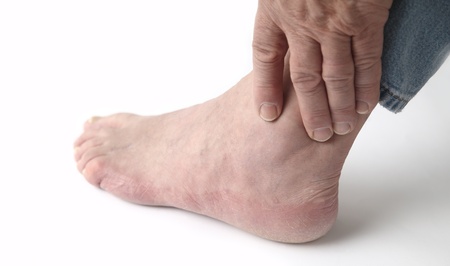Don’t Get Trapped with Chronic Ankle Problems
Perhaps you slipped on an icy sidewalk this past winter and turned your ankle, or maybe you injured it last spring while running, but now your ankle is bothering you again. At Goldsmith Podiatry we know that ankle sprains are a very common injury and, if they are not rehabilitated properly, they can be a source of ongoing discomfort.
A Painful Cycle
Although on the surface, it may appear that an ankle sprain is a fairly straightforward injury, there’s more going on than meets the eye. Basically, when you twist your ankle, you over stretch the ligaments. This can happen to a minor or more major degree and sometimes with a severe sprain the ligaments can be torn. But ankle injuries are much more complex. They involve possible joint damage, bruised cartilage and even broken bones. When the pain and swelling subside, many patients think the sprain is healed and resume regular activities, only to find themselves in pain or with chronically weak ankles down the road. This is because in addition to the ligaments healing, it’s necessary to address all the ancillary damage as well to joints and bones and also to strengthen surrounding muscles which help support the ankle and can help prevent future strains. Unfortunately, as many as 80% of sprained ankles that don’t receive proper (or any) treatment will result in chronic symptoms that include pain, stiffness and ankle instability. This leaves you more vulnerable for future repeated ankle injuries and the risk of arthritis later in life at the injury site.
Get the Full Treatment
Early evaluation and aggressive treatment are essential for avoiding chronic ankle problems. As soon as an ankle injury occurs, call our Upper West Side office for an appointment at: 212-877-1002. While you wait for your appointment, follow the RICE regimen: rest, ice, compression and elevation for the injured area. Our podiatrists, Dr. Howard Goldsmith or Dr. Rosanna Troia will use the latest technology to determine the exact location and extent of your injury and whether there is a sprain, fracture, dislocation or torn ligament involved. The proper treatment plan can than be developed. Be sure to follow the full plan for as long as the podiatrist prescribes, even if your ankle feels better.
To learn more about chronic ankle issues, contact us today.

